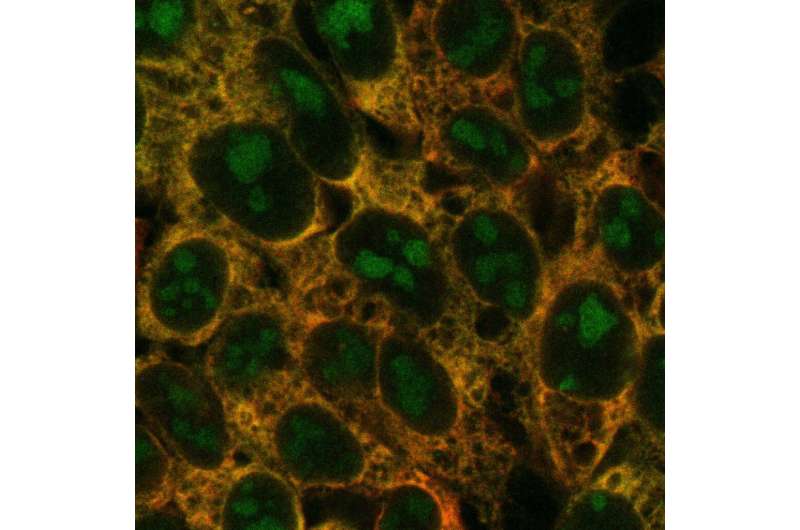Researchers identify key complex for ribosome generation

UT Southwestern researchers have identified a four-protein complex that appears to play a key role in generating ribosomes—organelles that serve as protein factories for cells—as well as a surprising part in neurodevelopmental disorders. These findings, published in Cell Reports, could lead to new ways to manipulate ribosome production, which could impact a variety of conditions that affect human health.
"Ribosomes are fundamental for life, but we've had an incomplete understanding of how they're put together and how the process of ribosome production is regulated," said lead author Michael Buszczak, Ph.D., Professor of Molecular Biology and member of the Harold C. Simmons Comprehensive Cancer Center at UT Southwestern. "Our findings shed significant light on these questions."
Dr. Buszczak explained that ribosomes are present in varying amounts in every cell of every organism on Earth. Because of their key role as protein producers, he added, variations from these natural set points can have deleterious consequences. For example, cancer cells tend to increase ribosome production to boost protein production necessary for unchecked cell division. In addition, a group of rare diseases known as ribosomopathies—characterized by abnormal ribosome production—manifests with a variety of symptoms including anemia, craniofacial defects, and intellectual disability.
Although every species has ribosomes, most of what's known about ribosome biogenesis has come from the popular lab model, yeast. The basics of this process are the same for human ribosome biogenesis, Dr. Buszczak said, but the specifics are not. Consequently, the details that make human ribosome generation unique have been unknown.
To learn more about this process, Dr. Buszczak, Chunyang Ni, a graduate student in the Buszczak lab, and their colleagues, including Jun Wu, Ph.D., Assistant Professor of Molecular Biology at UTSW, started by developing a technique that prompted old ribosomes to glow red and newly generated ribosomes to glow green. The researchers used this tool on several different human cell types, confirming different rates of ribosome production in each.
Using the gene editing tool called CRISPR, the researchers inactivated individual genes to identify those that might be key players in ribosome biogenesis. Their search turned up four genes known as CINP, SPATA5L1, C1orf109, and SPATA5. Further research showed that these genes come together into a complex that strips a placeholder protein from ribosomes when assembly is almost complete, allowing a different protein to take its place for ribosome maturation.
Previously, SPATA5's function in cells had been unknown; however, mutations in this gene have been associated with neurodevelopmental disorders including microcephaly, hearing loss, epilepsy, and intellectual disability. When the researchers inserted two of these mutations into cells, causing them to create a mutant SPATA5 protein, the cells couldn't generate the normal level of functional ribosomes—suggesting that these neurodevelopmental disorders could stem from ribosome problems.
Dr. Buszczak said that he and his colleagues plan to study why the central nervous system appears to be more sensitive than other cell types to ribosomal disruptions. He added that these findings could eventually lead to new treatments for cancer, ribosomopathies, and other conditions affected by over- or under-production of proteins.
Other UTSW researchers who contributed to this study include Daniel A. Schmitz, Jeon Lee, and Krzysztof Pawłowski.
Dr. Buszczak is the E.E. and Greer Garson Fogelson Scholar in Medical Research. Dr. Wu is a Virginia Murchison Linthicum Scholar in Medical Research and a Cancer Prevention and Research Institute of Texas (CPRIT) Scholar.
More information: Chunyang Ni et al, Labeling of heterochronic ribosomes reveals C1ORF109 and SPATA5 control a late step in human ribosome assembly, Cell Reports (2022). DOI: 10.1016/j.celrep.2022.110597
Provided by UT Southwestern Medical Center

















